Norway is a country that boasts some of the rarest animal species on the planet. With its wild natural surroundings and urban life, Norway offers a mix of unlimited fun and an amazing experience.
From walruses, seals, puffins, to the Arctic foxes, Norway is the right place to visit if you want to see some of the rarest animal species on the planet.
However, while exploring Norway, it is important to watch out for some dangerous animals that can be quite dangerous.
These include the polar bear, wolverine, ticks, brown bear, and the Eurasian lynx, among others.
In this article, I will provide you with a guide to some of the dangerous animals in Norway that you should watch out for when visiting the country.
Key Takeaways
- Norway is a great destination for travelers interested in seeing rare animal species.
- Visitors to Norway should be aware of potentially dangerous animals such as polar bears, ticks, and brown bears.
- Despite the presence of dangerous animals, Norway offers a mix of natural and urban experiences that are sure to provide an unforgettable adventure.
- Alway seek local advice when exploring new regions and wild areas
Reindeer
I have learned that reindeer are also known as caribou in Northern America.
In Europe, they can be found throughout the country, with populations increasing during the winter.
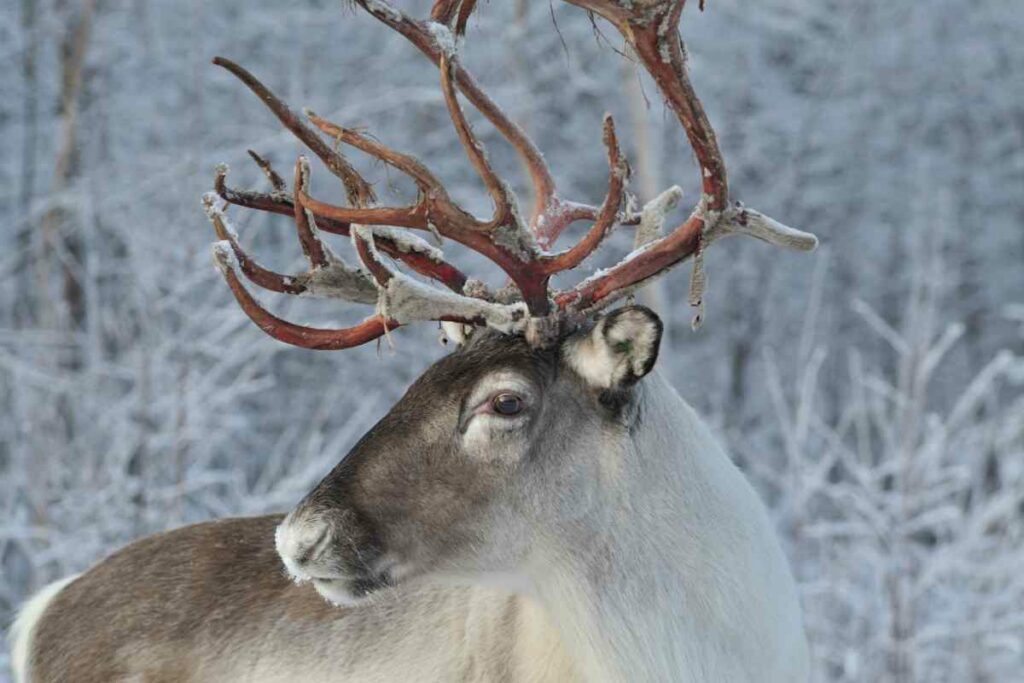
Some herds are wild, while others are domesticated. Reindeer have large antlers, which can be dangerous during mating or when nursing their young.
It’s important to be cautious around these majestic animals, but they are a beautiful sight to see in their natural habitat.
Polar Bear
During a trip to Norway, encountering polar bears is a possibility. These creatures are dangerous and should be approached with caution.
Svalbard is a significant location where polar bears are found in their natural habitat. Many people visit the region to explore and see them in the wild.
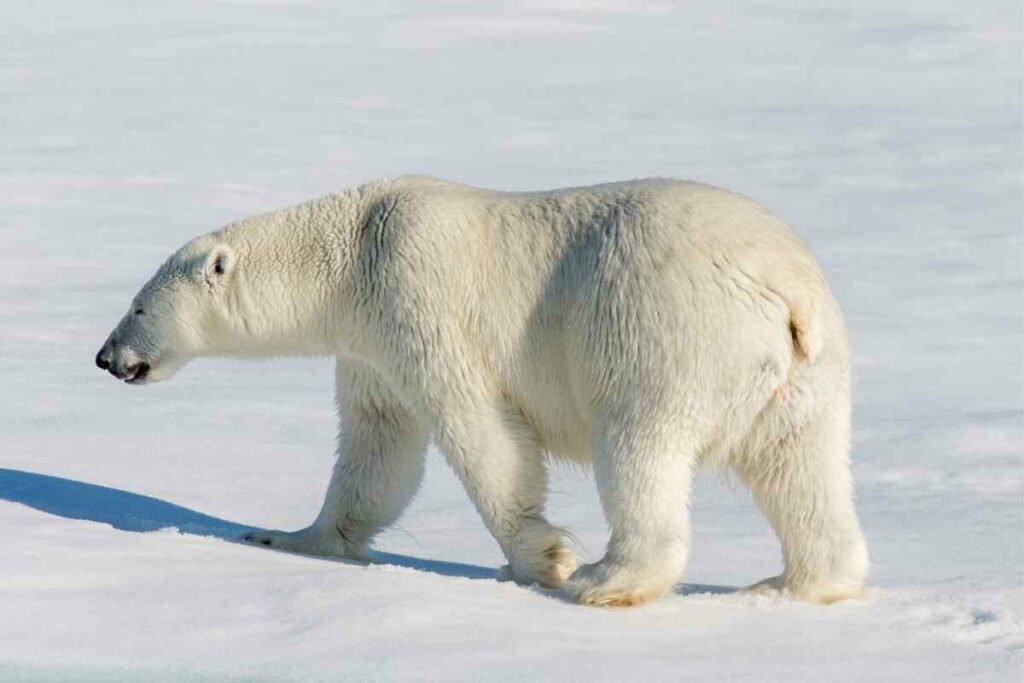
However, it is important to note that polar bears in this region are endangered species and are territorial, meaning they will attack unannounced.
Reports indicate that the largest bear found in the region weighs up to 1500 pounds, and these creatures can cause fatalities.
There have been instances where bears have attacked people in Svalbard, and it is crucial to stay away from their habitats during your visit.
When exploring different places, it is essential to be careful since polar bears have sharp claws, are strong, and can kill. If you are attacked and survive, seek immediate medical attention.
It is important to note that polar bears are not found on mainland Norway, and the only place to find them is on the Svalbard archipelago and the surrounding Barents sea ice.
As with all wildlife, it is important to show respect and keep a safe distance.
Wolverine
Wolverines are the largest species in the weasel family, often resembling bears.
These creatures are known for their aggressiveness and immense strength, which can cause major issues if not handled carefully. Wolverines are capable of attacking without notice and can grow up to 80 pounds.
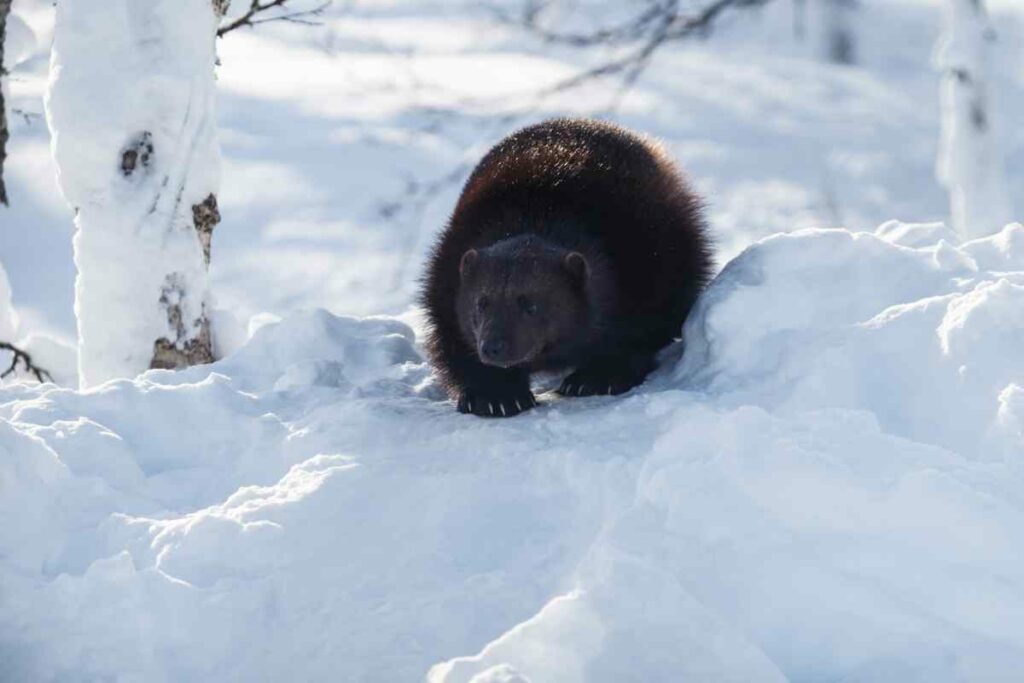
It is important to understand that wolverines can take down a reindeer that weighs over 200 pounds. These animals are ferocious and should be avoided when exploring Norway.
Wolverines are commonly found in central parts of Norway and along the Swedish border. The highest concentration of wolverines is found in Øvre Dividal National Park.
Wolverines often feed on carcasses and consume bird eggs, berries, and other small animals. Although there are no recorded human attacks from wolverines, it is important to take precautions and avoid them when exploring Norway.
Always keep a safe distance when encountering these creatures to avoid the risk of being attacked.
In summary, wolverines are aggressive creatures with immense strength that should be avoided when exploring Norway.
It is important to keep a safe distance and take precautions to avoid the risk of being attacked.
Read later – Norway vs. Switzerland | Which is the Better Travel Destination?
American Mink
I have learned that the American mink is not native to Norway and was brought to the country for fur farming purposes.
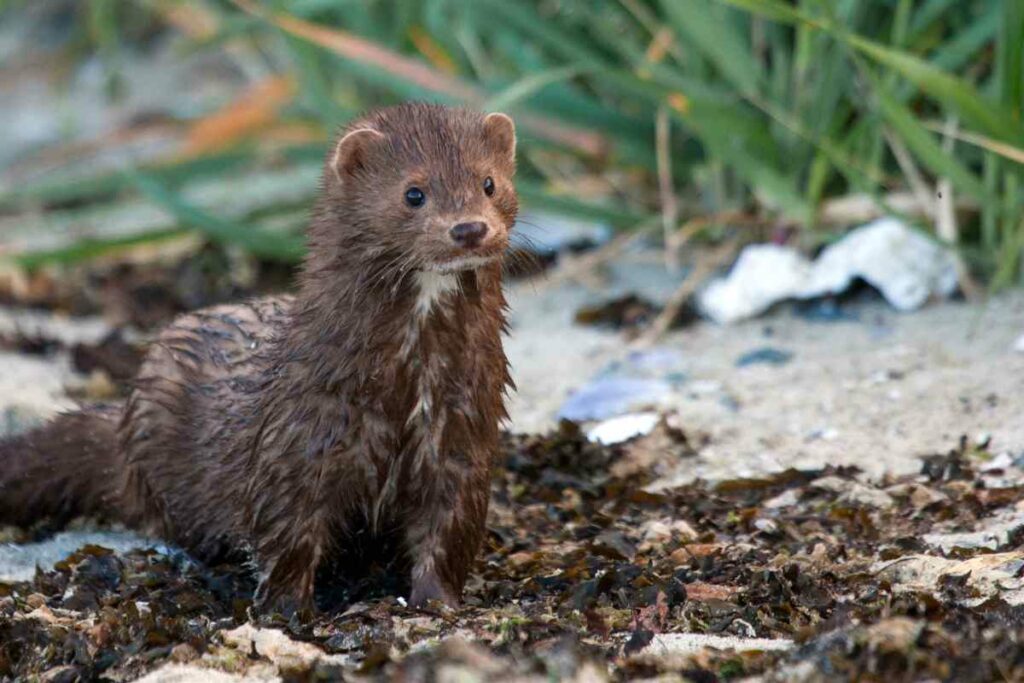
This species is often endangered, and it is important to be cautious as they can be protective. While there are islands in Norway without American minks, they can be found in various parts of the country.
It is crucial to be aware of their presence and take necessary precautions when encountering them.
Ticks
Ticks are small, blood-sucking parasites that attach themselves to their hosts and can transmit diseases.
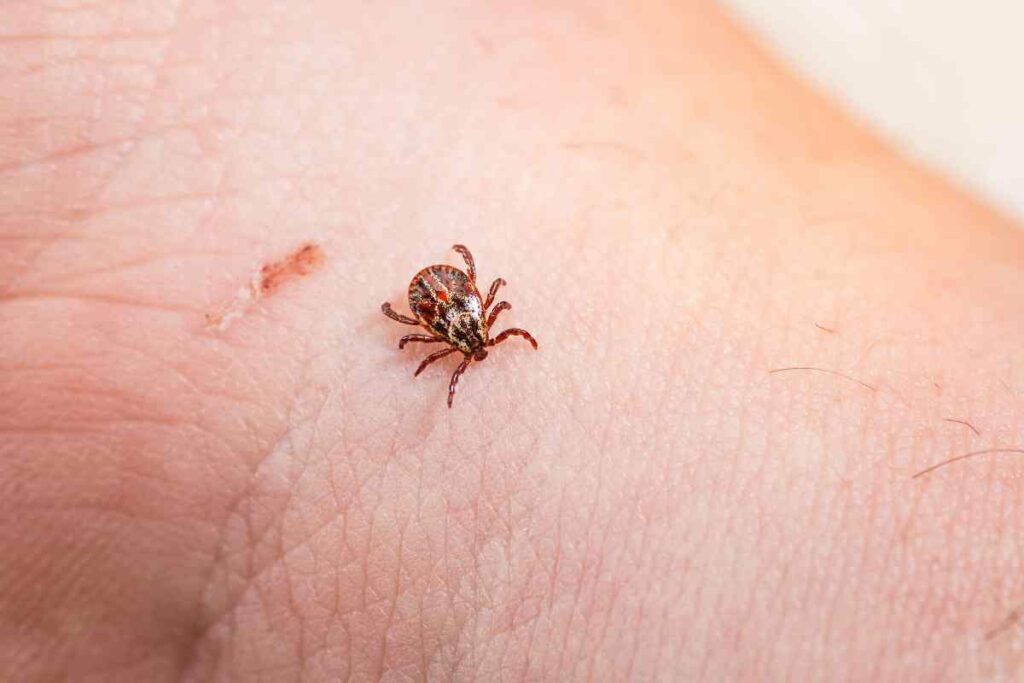
In Norway, there are over 13 species of ticks, with the sheep tick being the most common. Ticks are prevalent in the southern part of Norway and along the coastline.
Ticks are difficult to kill because they do not have fangs or claws, and they can detach themselves from their host once they are full of blood. They can also lay eggs on the ground, which can hatch and continue the cycle of infestation.
When ticks bite humans, they can transmit diseases such as tick-borne encephalitis and Lyme disease. It is important to seek immediate medical attention if bitten by a tick.
To avoid tick bites, it is recommended to wear long-sleeved clothing, use insect repellent, and check for ticks after spending time outdoors.
It is also important to remove ticks properly to avoid leaving any parts of the tick’s body in the skin.
Muskox
As one of the most identical creatures found in Norway, the muskox is a unique animal that can only be found in the wild in Norway.
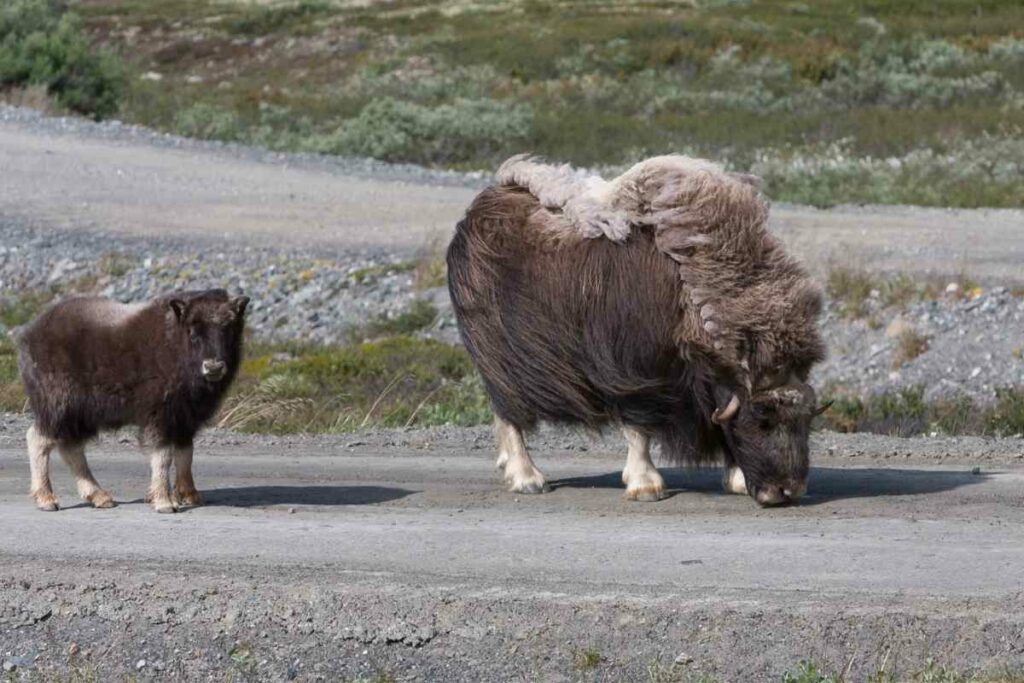
They are usually found in national parks and thrive in these parts of the world. However, it is important to take care when visiting these parks, as these animals can attack unknowingly.
During the mating season or when they have their young ones, the males can be very hostile and may attack people.
The strong odor released during the mating period is overwhelming, and it is important to review the region before visiting. Despite their large curved horns and docile appearance, muskoxen can be very dangerous and may attack immediately.
To avoid any potential danger, it is crucial to check the environs and avoid areas where these creatures are likely to thrive since they can be very defensive and charge at you.
Muskoxen can grow up to 800 pounds, making them a force to be reckoned with. It is recommended to keep a safe distance of at least 200 meters in the wild.
Overall, while muskoxen are fascinating creatures to observe, it is important to remember that they are wild animals and should be treated with caution and respect.
Wolf
In Norway, the grey wolf is the most common type of wolf, with approximately 100 of them wandering around the country.
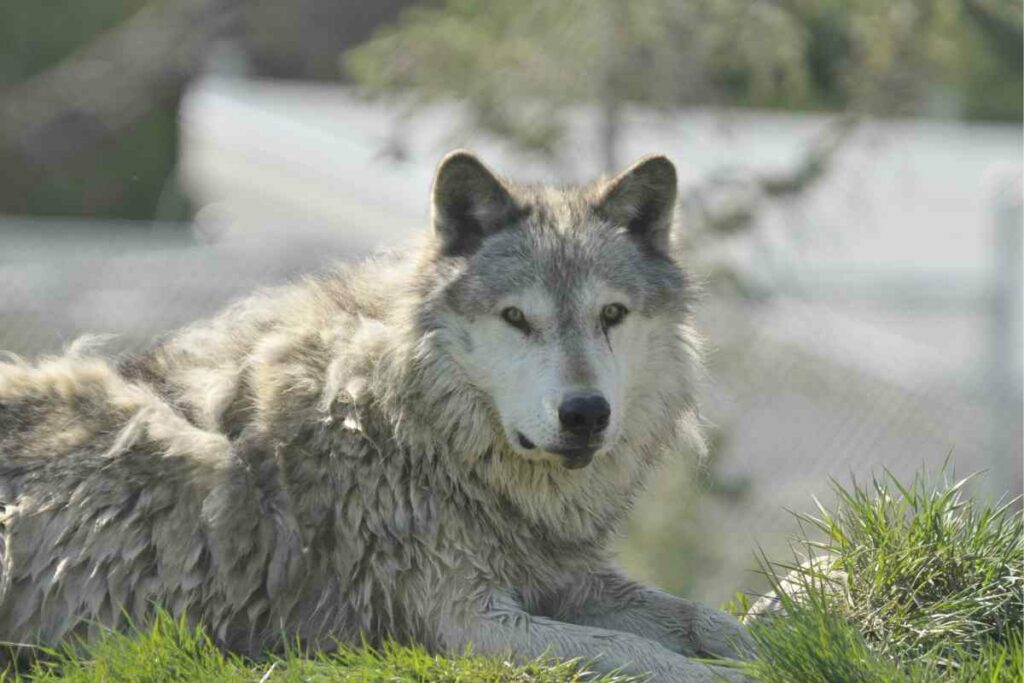
These wolves can even cross the border into Sweden. Due to their low numbers, they are considered one of the most endangered species in Norway.
As a result, they have become aggressive towards people and other animals. Conservation groups continue to advocate for the protection of these creatures, and it is important to maintain a safe distance from them as they can be dangerous.
For more information on dangerous animals, check out my article on Dangerous Animals in Vietnam.
Moose
Encountering a moose can be dangerous as they are one of the largest animals in Norway, growing up to 7 feet tall and weighing up to 1200 pounds.
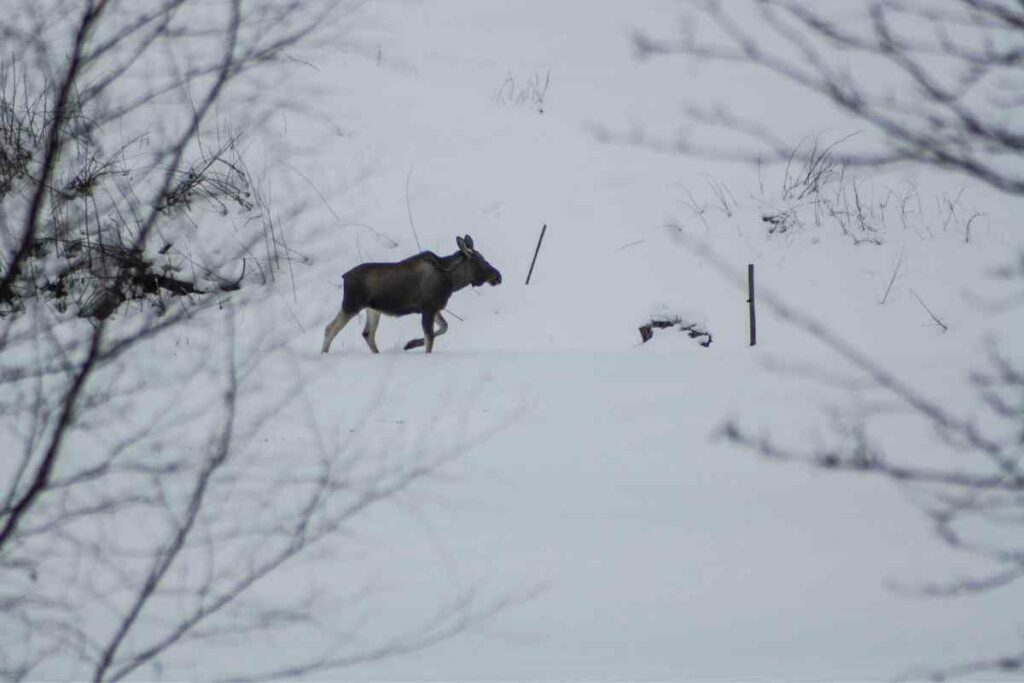
Moose, along with reindeer and deer, are commonly found across the country and are the main cause of deaths due to road accidents.
It is important to avoid them when encountered as hitting a moose with a vehicle can cause major injuries and even death.
Moose are not known for their aggressiveness, but they can attack if they feel threatened or if their habitat is invaded.
They do not have claws, but they can trample and kick with their front hooves, which can cause major injuries to vital organs. It is important to keep a safe distance from them and avoid any sudden movements that could provoke them.
In case of a moose attack, it is important to seek immediate medical attention. It is also important to note that moose can attack without warning, so it is best to keep a safe distance from them at all times.
The European Adder – Vipera berus
The European adder is the most dangerous snake in Europe and can be found in Norway. They are capable of living in the Arctic Circle and can adapt to nearly every environment they interact with.
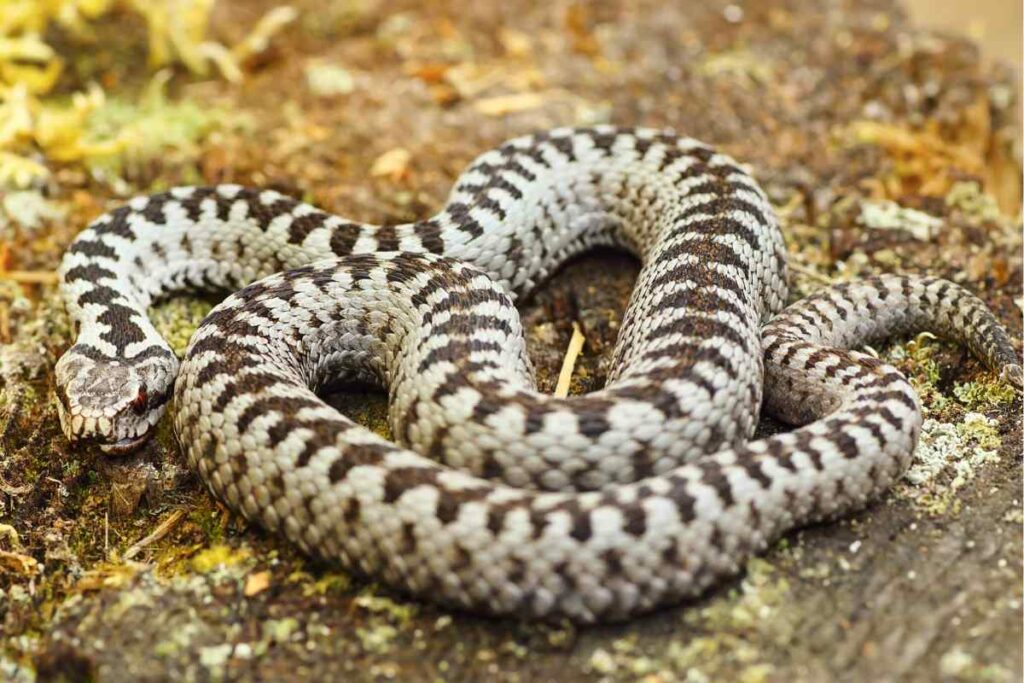
The adder likes sandy beaches, grassy regions, and rocky parts of the country. They usually hunt for food at night and hibernate during the winter.
The adder’s bite is dangerous and can be fatal if not addressed immediately.
Symptoms of a bite include intense swelling and pain in the affected area, loss of concentration, loss of muscle function, lowered blood pressure, and even death. If you encounter a snake, seek immediate medical attention.
It is important to note that the adder is common during the summer when they come out of hibernation to look for food.
It is best to be cautious and aware of your surroundings when hiking or walking in areas where snakes may be present.
Eurasian Lynx
As Europe’s third-largest predator, the Eurasian lynx is a stealthy and dangerous creature that can attack without warning.
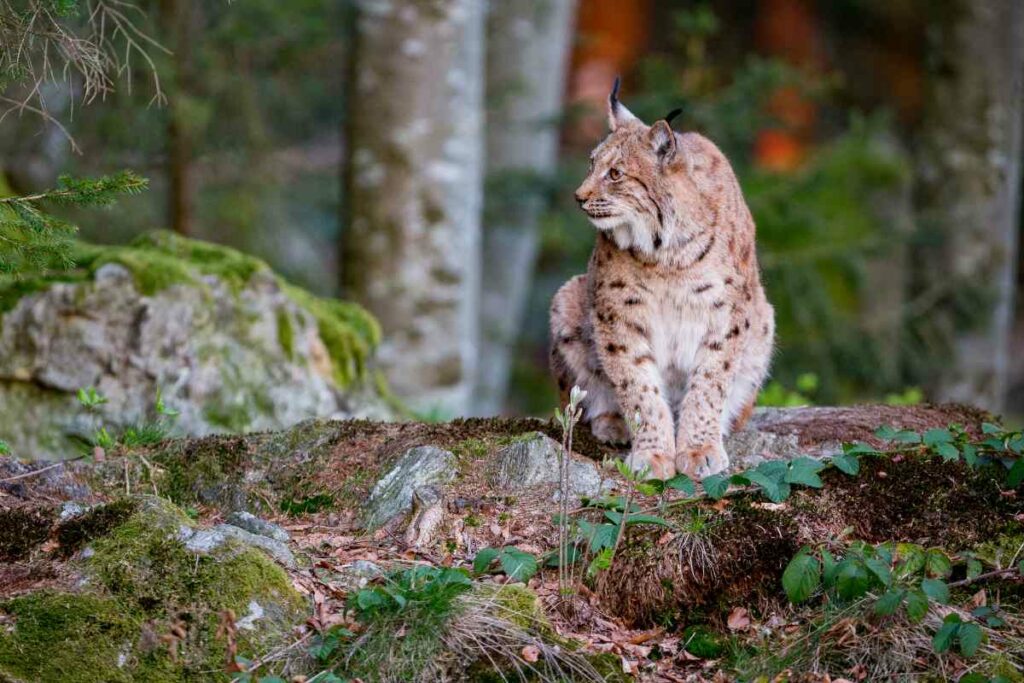
While there are no recorded human attacks, it is best to avoid areas where they inhabit. The lynx is a skilled hunter and feeds on foxes, marmots, and grouse.
If you want to see the creature, the Riesa national park is the best place to visit. It is home to the largest population of Eurasian lynx. The lynx’s distinguishing feature is its dark tufted ears and tail.
Brown Bear
During my trip to Norway, I may encounter brown bears. These majestic creatures were hunted for their fur and are now on the brink of extinction.
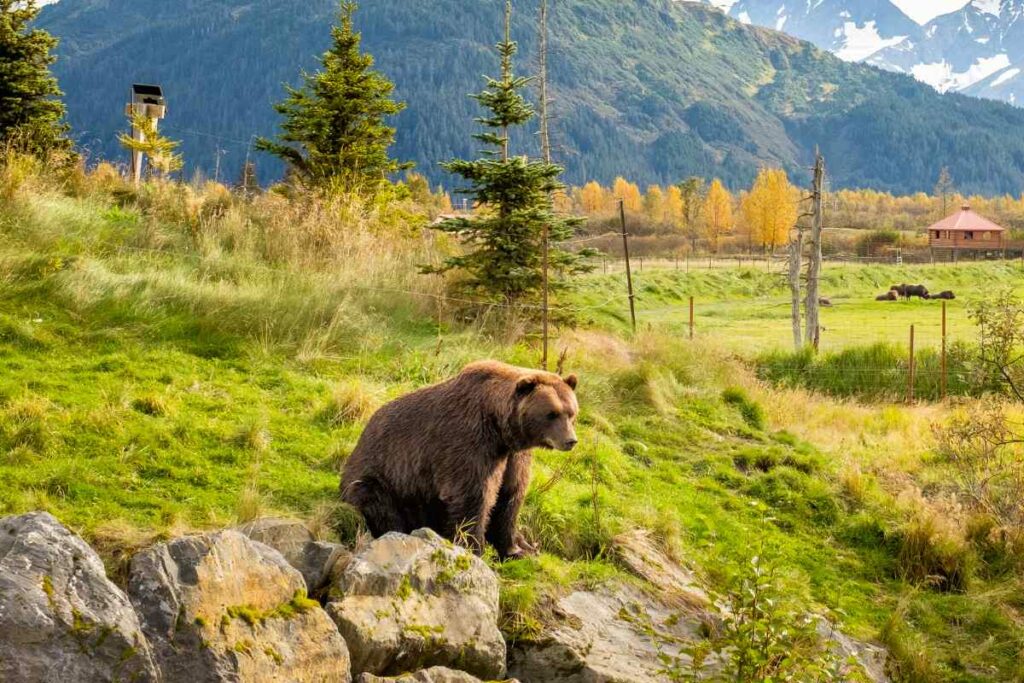
Due to habitat destruction, they have become more aggressive and will fight back. Although they are usually shy and tend to stay in their wild environment, they can become aggressive, especially when nursing young ones or when they feel their habitat is threatened.
To avoid surprising the bears, it is important not to startle them. If they feel threatened, they may attack. It is crucial not to run away as they will chase and attack you.
If attacked, seek immediate medical attention. It is best to avoid the mating and hibernation seasons when planning a trip to Norway to minimize the risk of encountering brown bears.
Eurasian Red Squirrel
The Eurasian Red Squirrel (Sciurus vulgaris) is a species of tree squirrel that used to be common in Norway a century ago but is now considered an endangered species.
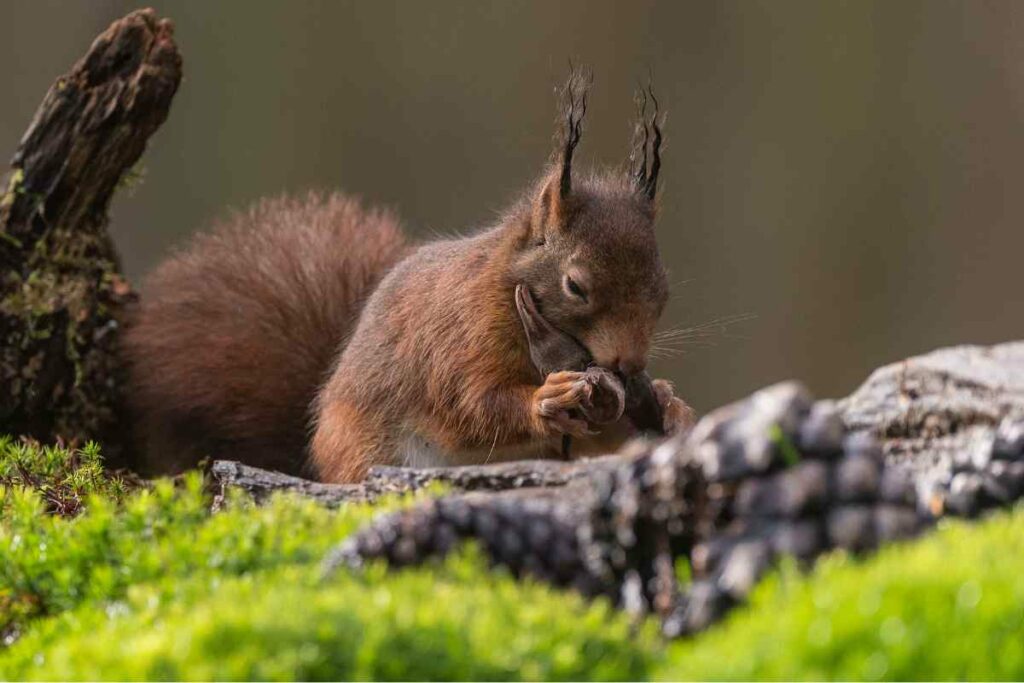
However, their population is slowly growing due to conservation efforts. They can be found throughout the country and usually feed on small animals and berries.
It is important to note that they can be aggressive, especially when they have their young ones, so it is best to avoid them during this period.
Frequently Asked Questions
What types of wild animals are considered dangerous in Norway?
Norway is home to a variety of wildlife, but only a few are considered dangerous to humans.
The most notable ones include the brown bear, the wolf, the lynx, and the moose. These animals can pose a threat if they feel threatened or cornered, so it’s important to give them space and respect their territory.
Are there any venomous snakes in Norway?
Yes, Norway has one venomous snake, the European adder, also known as the hoggorm.
While its bite is rarely life-threatening, it can cause pain, swelling, and other symptoms. It’s important to wear sturdy shoes and avoid walking through tall grass or rocky areas where snakes may be hiding.
Do wolves pose a threat to humans in Norway?
Wolves are generally shy and avoid humans, so they pose little threat to people.
However, if they feel threatened or if they are starving, they may attack. It’s important to keep a safe distance from wolves and not to approach them or try to feed them.
Are wolverines commonly found in Norway?
Wolverines are rare in Norway and are mostly found in the northern parts of the country. They are elusive animals and are not considered a threat to humans.
What is the largest predator in Norway?
The brown bear is the largest predator in Norway, with some males weighing up to 350 kg. While they can be dangerous if provoked or cornered, they are generally shy and avoid humans.
Are there grizzly bears in Norway?
No, grizzly bears are not found in Norway. The brown bear is the only species of bear found in Norway.
Final Thoughts ?
Don’t let any of these animals scare you from visiting this wonderful country.
Just take the basic safe advice into consideration and check with local authorities for updates before exploring the wildest regions in Norway.
Use tech like radios and GPS to help you if you get into trouble or get lost in the wild.
- The Secret Travel Locations Bloggers Haven’t Discovered Yet
- Stress-Free Breaks: Choosing the Perfect Getaway for Overworked Professionals
- Inside Secrets: The Quick Guide to Planning Your Dream Vacation
- Hidden Gems vs Tourist Spots: Saving Pounds on Your Next Vacation
- Master the Art of Travel Thrifting: Tips from the Pros
- Travel Like a Spy: Secret Skills for Safe Adventuring






